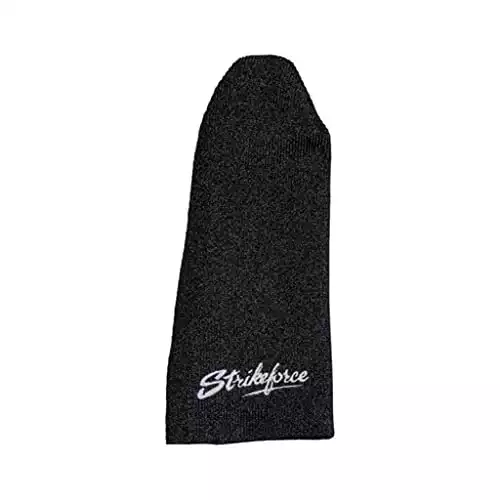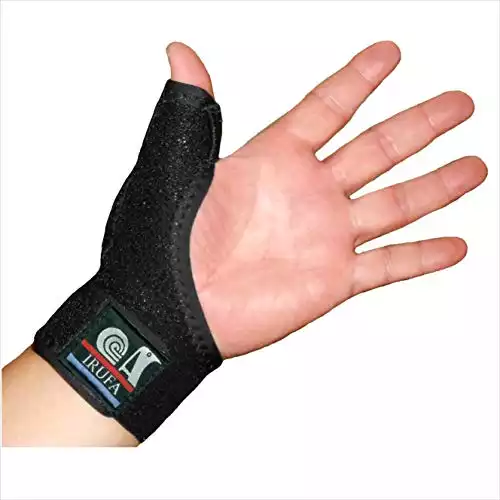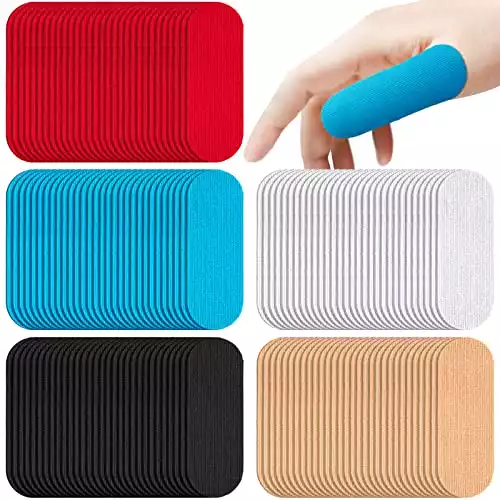
Repetitive motions and swinging a heavy ball can take a toll on your body. Bowling-related bodily injuries can manifest in the form of annoyances such as back pain, hand pain, and arm pain.
But one of the most essential parts of your body that you could hurt while bowling is your thumb. If you’ve done any amount of research about thumb injuries from bowling, you may have come across bowler's thumb and thumb socks.
In this article, we’re going to focus on the thumb sock for bowling.
By the end, you’ll be well-informed, and given all, you need to know about thumb socks for bowling.
Contents
Thumb Sock for Bowling: Why They’re Important
It may seem overwhelming to even think about something other than how to make a strike. But knowing your options can really do you some good. One item you’ll commonly see bowlers using is the thumb sock.
One might assume it seems a bit silly to use something like a thumb sock. After all, it’s just your thumb, right?
Though you should definitely try to take care of obvious areas like the muscles, tendons, and joints of your arms, back, and legs with bowling, your thumb is also critical.
You could argue that this digit is an extremely vital part of bowling, as your fingers and thumb stabilize the ball as you swing, and it may experience a bit of strain when making a smooth release. Your thumb is crucial to getting that elusive strike – and to bowling in general.
What Is a Thumb Sock?
A thumb sock is a fabric sleeve that you put on your thumb when bowling. It helps to reduce swelling and gives a player added grip and control while swinging the ball. The sock only covers the thumb and can be made from various materials depending on your needs.
The original thumb socks slid over the thumb without any additional anchoring material on them. However, that didn’t cut it for some bowlers. These few found that while the sock helped, it would slip and slide around, negating the positive effects of the thumb sock.
Nowadays, you can get thumb socks that are anchored with material that wraps around your wrist if you don’t like the sensation or fit of a basic thumb sock. Sizes can range from small to x large. So, no matter your needs, you’re likely to be able to find a thumb sock for you.
Benefits of Thumb Socks
Once you know the benefits of thumb socks, you’ll probably rush to get yourself one. Here are several ways any bowler can benefit from a thumb sock:
- Safer Play. Bowling with a thumb sock reduces your risk of spraining, breaking, or otherwise injuring your thumb during the game. It can also reduce your risk of worsening any existing thumb issues. Make sure the fit is good, as one size fits most.
- More Thumb Traction. Bowlers may find that their hands become sweaty while bowling. A thumb sock will absorb any moisture and increase your thumb’s traction, allowing a quick exit with the inside of the bowling ball. A wet thumb is slippery, which is not conducive to scoring big or avoiding mishaps.
- More Feeling in your Thumb. Bowling alleys are usually air-conditioned, and your hands are the first to get cold. When that happens, you won’t feel them as much. A thumb sock helps keep your thumb insulated and warm with better circulation, allowing you to retain complete control over your thumb and ball.
Some bowlers don’t pay attention to their thumb until after something happens to injure it or cause pain. Luckily, there’s no need to wait until after an accident to protect such a vital part of your bowling game. A thumb sock might be just the kind of equipment that you need to keep your thumb safe while improving your game.

Considerations Before Getting a Thumb Sock
Before investing in a thumb sock for existing pain, make sure any thumb issues you’re experiencing aren’t being caused by easily correctable problems. It never hurts to be cautious and use one if you aren’t experiencing issues already. However, taking care of other factors that might be affecting your game first can only put you in a better spot.
- Proper fitting thumb hole: ensure that your bowling ball's thumb hole is the correct size. A hole that’s too small can result in an uncomfortable release. Wearing a thumb sock when your thumb hole is already too tight could lead to more problems.
- Proper release: pay attention to your ball release and how it feels coming off your hand. You should have a smooth consistent release. Then determine if it’s working for you. If you’re not sure if your release needs work, ask an experienced bowler or coach to take a look and watch you bowl.
While a thumb sock can still help in either situation, it’s best to rectify any issues with your form and remedy them to prevent injuries down the line.
Thumb Sock Material
As you can imagine, there are several types of thumb socks to choose from. Each one is a little different and provides various benefits, so it doesn’t hurt to try a few and see what works best.
Here are your options:
- Lycra: This Brunswick thumb sock is spandex and gives a bowler comfort and stretch for their thumb during gameplay.Bowling for Beginners may receive compensation if you make a purchase using this link, at no additional cost to you.
- Neoprene: This material mimics rubber. It is the most protective type of thumb sock on the market.Bowling for Beginners may receive compensation if you make a purchase using this link, at no additional cost to you.
- Velcro: Velcro gives a bowler the kind of tightness and flexibility they need during their release. Velcro is adjustable and can be modified as needed.Bowling for Beginners may receive compensation if you make a purchase using this link, at no additional cost to you.
Many manufacturers will have sizing guidelines in their product descriptions – use that when available to determine your size.
If that’s not available, it wouldn’t hurt to check customer reviews to see whether users have reported a tight, loose, or accurate fit for that particular type and brand of thumb sock.
Thumb Sock vs. Tape
Before the thumb sock was created and readily available to use and reuse, bowlers used to tape their fingers to protect their joints while bowling. Then came the creation of the thumb sock, which now has many bowlers debating on which one is the better overall option.
Those who use tape state that they love the customization of it. They can adjust to their thumb’s needs each time they tape up. Then, once they’re done playing, they simply toss the tape out.
Thumb sock enthusiasts love that their sock is more cost-effective than tape while providing the kind of protection with the ultra stretch lycra, giving a consistent thumb release and versatility they need during their games.
Still, thumb socks require periodic washing – many of them are machine washable – to rid them of dirt, sweat, and oil. Thumb socks also come in various materials, allowing bowlers to select one with the right features for their bowling needs.
Should You Wear a Thumb Sock?
When you wear a thumb sock while bowling, you’re providing your skin with an extra layer of protection. This can help you to avoid your thumb from sticking in your ball and prevent blisters or tears on the skin from friction and tension.
In addition, you can experience a much smoother release while wearing a thumb sock, putting much less stress on the thumb joint as well.
Related Articles
If all of this sounds attractive to you, you should definitely get your hands on a thumb sock. Overall, thumb socks are a real boon to many bowlers. And if you can, we encourage you to add one to your bowling equipment stash.
You’ll be glad you did. We hope that this article has given you all the information you were looking for, and we wish you the best as you progress in this amazing sport!
Kira Byrd, a Certified Fraud Examiner, holds a B.S. in Accounting from the University of Alabama at Birmingham. With a passion for bowling from her childhood, Kira has poured her expertise and personal experiences into creating and nurturing Bowling For Beginners. Kira's mission is to meet new bowlers where they are and guide them toward consistently achieving higher scores. With a focus on skill development and strategic techniques, she empowers readers to take control of their game and unlock their true potential.
Bowling For Beginners embodies strict editorial integrity, ensuring reliable and unbiased information. Kira's commitment to delivering valuable insights and practical strategies is reflected in every article. Here's an explanation of our editorial policy and how we get money.









